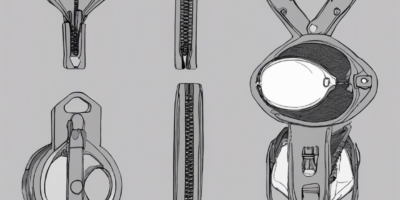Introduction
Dermatophagoides farinae, commonly known as the common house dust mite, is a microscopic arachnid that thrives in household environments. These tiny creatures, measuring around 0.2-0.3 millimeters in length, belong to the Pyroglyphidae family. While they are not harmful to most people, those with allergies or asthma may experience symptoms triggered by exposure to dust mites. Understanding the behavior, habitat, lifecycle, and effective control measures for D. farinae is essential for maintaining a healthy indoor environment. In this comprehensive guide, we delve into the world of Dermatophagoides farinae to help you better manage and reduce exposure to this common allergen in your home.
Overview of Dermatophagoides farinae
Dermatophagoides farinae, also known as the American house dust mite, is one of the most prevalent species of dust mites found in households worldwide. These microscopic organisms feed on organic matter such as skin flakes shed by humans and pets. Dust mites are most commonly found in warm, humid environments, making bedding, upholstered furniture, and carpeting ideal habitats for their proliferation.
Behavior and Habits of Dust Mites
-
Feeding Habits: Dust mites feed on skin cells shed by humans and pets. These proteins are found in household dust, making mattresses, pillows, and carpets prime feeding grounds for these microscopic creatures.
-
Reproduction: Dust mites reproduce rapidly, with a single female capable of laying up to 100 eggs during her lifespan. Under favorable conditions, the population of dust mites in a household can quickly grow, leading to increased allergen exposure.
-
Preferred Environment: Dust mites thrive in warm and humid conditions, with optimal growth occurring at temperatures between 75-80°F (24-27°C) and relative humidity levels above 60%. Bedrooms, living rooms, and areas with little ventilation are ideal environments for dust mites to flourish.
Lifecycle of Dermatophagoides farinae
-
Egg: The lifecycle of a dust mite begins with the deposition of eggs by adult females. These eggs hatch into larvae within a few days.
-
Larva: The larval stage of the dust mite is the feeding stage, where they consume skin cells and grow in size.
-
Nymph: After several molts, the larvae develop into nymphs, which eventually mature into adult dust mites.
-
Adult: Adult dust mites continue the cycle by reproducing and laying eggs, thus perpetuating the population within the household.
Allergies and Health Effects
Allergies to Dust Mites: Dust mite allergens are a common trigger for allergic reactions in individuals sensitive to their proteins. Symptoms may include sneezing, coughing, wheezing, chest tightness, and skin rashes. People with asthma may experience exacerbated symptoms when exposed to dust mite allergens.
Asthma: For individuals with asthma, exposure to dust mites can worsen respiratory symptoms and trigger asthma attacks. Managing dust mite exposure is crucial in reducing asthma-related complications.
Skin Irritations: Dust mite allergens can also contribute to skin irritations and eczema in susceptible individuals. Reducing exposure through proper cleaning and maintenance practices can help alleviate these symptoms.
Detection and Control Measures
Detection: Dust mites are invisible to the naked eye, making detection challenging without magnification. However, allergen test kits and microscope examination of dust samples can confirm the presence of dust mites in the home.
Control Measures:
-
Regular Cleaning: Vacuuming carpets, upholstery, and bedding weekly can help reduce dust mite populations and allergen levels in the home.
-
Washing Bedding: Washing bedding in hot water (above 130°F or 54°C) can effectively kill dust mites and remove allergens.
-
Encase Mattresses and Pillows: Using allergen-proof covers for mattresses and pillows can create a barrier that prevents dust mites from infiltrating bedding.
-
Maintain Optimal Humidity Levels: Keeping indoor humidity below 50% can inhibit dust mite growth and reduce allergen exposure.
-
HEPA Filters: Utilizing HEPA filters in vacuum cleaners and air purifiers can trap dust mite allergens and improve indoor air quality.
-
Reduce Clutter: Minimizing clutter in living spaces can decrease dust accumulation and create less hospitable environments for dust mites.
Frequently Asked Questions (FAQs)
1. What are the common symptoms of dust mite allergies?
Common symptoms of dust mite allergies include sneezing, runny or stuffy nose, itchy or watery eyes, coughing, chest tightness, and asthma exacerbations.
2. Can dust mites bite humans?
Dust mites do not bite humans. Their primary source of nourishment is shed skin cells.
3. How long can dust mites survive without food?
Dust mites can survive for several months without a food source, making it essential to implement consistent cleaning practices to reduce their populations.
4. Are there natural remedies for controlling dust mites?
Some natural remedies such as using essential oils like eucalyptus or tea tree oil, sprinkling diatomaceous earth, or freezing soft toys can help reduce dust mite populations. However, these methods may not be as effective as traditional cleaning and control measures.
5. Can dust mites be completely eliminated from the home?
While it is challenging to completely eradicate dust mites from the home, consistent cleaning practices, reducing clutter, maintaining optimal humidity levels, and using allergen-proof covers can significantly reduce their populations and allergen levels.
6. Are dust mites visible to the naked eye?
Dust mites are microscopic and not visible to the naked eye. They can only be seen under a microscope.
7. Can dust mite allergens cause year-round allergies?
Yes, dust mite allergens can trigger allergies year-round, especially in climates where indoor environments remain warm and humid.
8. How often should bedding be washed to control dust mites?
Washing bedding in hot water (above 130°F or 54°C) every 1-2 weeks is recommended to effectively kill dust mites and remove allergens.
9. Are there specific regions in the house where dust mites are more prevalent?
Dust mites are commonly found in areas where humans spend a significant amount of time, such as bedrooms, living rooms, and upholstered furniture. Bedrooms, in particular, provide ideal conditions for dust mite proliferation due to body heat and shed skin cells.
10. Can dust mite allergens be harmful to pets?
While dust mites primarily feed on human skin cells, pets can also experience allergies to dust mite allergens. Symptoms in pets may include itching, skin rashes, and respiratory issues.
Conclusion
Dermatophagoides farinae, the common house dust mite, is a ubiquitous allergen present in households worldwide. Understanding their behavior, habits, lifecycle, and effective control measures is essential for individuals looking to minimize allergen exposure and maintain a healthy indoor environment. By implementing proper cleaning practices, reducing clutter, and controlling humidity levels, homeowners can effectively manage dust mite populations and create living spaces that are less conducive to allergen proliferation. Stay proactive in maintaining a clean and dust-free home to mitigate the impact of dust mite allergens on your health and well-being.













Comments